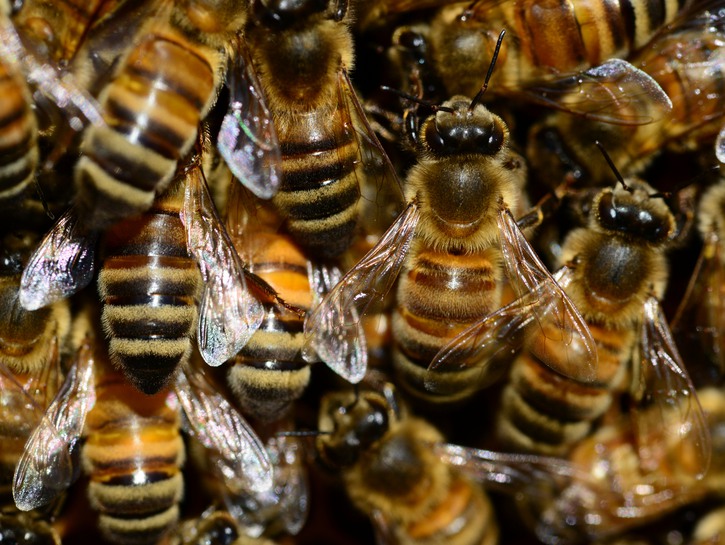So You Have A Bee Sting, Now What?
No one ever plans on getting stung by a bee, but it is important to know what to do in the event that you get stung. Bee stings are generally a little painful, but for most people, they do not cause serious harm. However, bee stings can be life-threatening for those who are allergic to them.
When honeybees sting something, their stingers stay inside whatever was stung. Since there are toxins in bees’ stingers, it is important to remove it immediately. These toxins are what cause pain and other symptoms as well as allergic reactions to bee stings. Wasps and other stinging insects, however, do not lose their stingers when they sting, but they do have the capability to sting multiple times.
If you get stung by a bee, you can expect to have symptoms like temporary intense pain, swelling, redness, warmth, and itching in the area where you were stung. For most people, the pain may only last for a few hours, but the swelling and redness may take a couple of days.
Those who are allergic to bees may have a more intense reaction that includes these symptoms:
- hives
- pale skin
- severe itching
- swelling of the tongue and throat
- difficulty breathing
- rapid pulse
- nausea
- vomiting
- diarrhea
- dizziness
- loss of consciousness
If you experience any of these severe symptoms after a bee sting, seek medical attention immediately because you may be experiencing anaphylactic shock.

Traditional Bee Sting Treatments
If you are not experiencing a serious allergic reaction or shock to a bee sting, you can treat your bee sting at home. These methods tend to be the go-to among most people.
The first you’ll want to do is remove the stinger by wiping the sting with gauze or scraping the area with your fingernail or a credit card. Afterwards, wash the sting with soap and water.
Ice or cold compresses can help keep the pain and swelling down, especially when paired with an anti-inflammatory medicine like ibuprofen. For severe swelling or itching, try taking an oral antihistamine like Benadryl for relief. Whatever you do, don’t scratch at your sting because it will only make the redness and swelling worse.
If you know you’re allergic to bees or other stinging insects, be sure to keep an EpiPen around the house or have one with you where you go. Quickly using an EpiPen after a sting can help prevent a severe allergic reaction.

At Home Bee Sting Treatments
If the traditional treatments don’t help out with swelling, you may want to try these home remedies. Keep in mind that most holistic home treatments aren’t supported by science. Before trying any of these methods, make sure you remove the stinger and wash the wound.
Honey
It may seem a little ironic, but using honey can be helpful to treat your bee sting. Honey has natural antibacterial and inflammatory properties, which can help prevent infection and reduce swelling. To use honey on your bee sting, just a spread a little amount onto the skin and cover the area with bandage. Just do this inside so that you don’t attract any more bees.
Baking Soda
Though it may not soothe your bee sting, some believe making a paste made up of baking soda and water can help neutralize the venom injected from the bee sting. To use this method, apply the baking soda paste to the affected area and cover with a bandage. Remove after 15 minutes.
Keep in mind that baking soda can damage the skin, so proceed with caution.
Essential Oils
Essential oils, like tea tree oil, witch hazel, lavender oil, thyme oil, and lavender oil have a ton of uses, especially when it comes to holistic health. Because of their antibacterial properties, some folks believe these oils can help with bee sting relief, however there is little evidence that supports these claims. If you decide to give this method a try, mix one of the aforementioned oils with a neutral carrier oil like olive oil. You should have a ratio of one drop of essential oil for every five drops of the carrier oil.
Aloe Vera
Aloe vera isn’t just for sunburns – it can also be just as soothing for bee stings. If you have an aloe vera plant at home, just break off a piece and gently rub the gel onto your sting. Store bought aloe vera gel works fine too.
Apple Cider Vinegar
Add neutralizing bee stings to the endless list of things apple cider vinegar can do. To treat your sting with apple cider vinegar, you can either soak a cloth or bandage with apple cider vinegar and apply it to the affected area or you directly soak the sting in apple cider vinegar for 15 minutes.
Calamine Lotion
Calamine lotion is often used to help with itchy and irritated skin, so it’s a no brainer why people use it to help reduce the itch that comes from a bee sting. If your sting starts to itch, rub a little calamine lotion on it for some quick relief.
Toothpaste
This one may seem a little far-fetched, but some folks believe that toothpaste can neutralize the venom in bee sting. If you want to try this method, take a small amount of toothpaste and spread it on the affected area. Keep in mind, this method is not supported by clinical research and your skin may react to the toothpaste if it is left on there for a long time. If your skin starts to react to the toothpaste, wash it off immediately.
